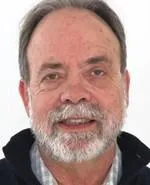Please note: this event has passed
In May 2019 King’s College London and Duke University held an evening of discussion, ‘testing the temperature’ of the relationship between modern and contemporary visual art and Christian tradition today. It was held on May 23rd at the Ballroom of the MacLean Center at the School of the Art Institute of Chicago.
This exceptional programme brought together contributions from Professor James Elkins (School of the Art Institute of Chicago) and Professor Thomas Crow (New York University), chaired by Professor Ben Quash (King’s College London).
James Elkins: On Misunderstandings between Religious Art Practices and Art History
This is a report on the distance between avowedly religious art (as it is practised and taught in art schools, academies, and theological unions) and the disciplines of art history, art criticism, art theory, and studio pedagogy. It has been said that the ongoing lack of communication between openly religious art practice and disciplines such as art history is a matter of modernism’s distance from faith, or of scholarship’s distance from advocacy; James Elkins proposes that one of the most fruitful ways of thinking about it is as a matter of the forms of conversation that take place in conferences, lectures, and other venues. In particular the distance between religious values and historical values can be seen as a question of the relative places of empathy, biography, and community
Thomas Crow: No Idols
The theme of this talk will be the generally inverse relationship between grandiosity in a work of art and its intrinsic theological import, the latter term being understood apart from visualizing points of doctrine or events of sacred import. From miracle-working ‘true images’ to the hyper-valuation placed on museum masterpieces severed from their original religious contexts, art is continually susceptible to the idolatrous regard that invests inert matter with living properties. To approach the sacred, an artist aware of this trap must defeat the normal enticements of idolatry, whether of self- righteous display or aesthetic delectation, while providing some compensating richness of experience. Thomas Crow encountered his own point of departure toward this insight in the shape of one painting, the White Tablecloth by J.B.S. Chardin, housed in the Chicago Art Institute.
Speakers
Professor Thomas Crow, Rosalie Solow Professor of Modern Art, New York University
Thomas Crow is Rosalie Solow Professor of Modern Art at the Institute of Fine Arts, New York University. Previously, Director of the Getty Research Institute, he initiated the Pacific Standard Time research and exhibition project devoted to art from southern California. He has held chairs in art history at Yale and the University of Sussex in the UK. His recent books include The Long March of Pop: Art, Music, and Design 1930- 1995 and Restoration: The Fall of Napoleon in the Course of European Art. His No Idols: the Missing Theology of Art was awarded the prize for best book of 2017 by the Art Association of Australia and New Zealand.

Professor James Elkins, Chair of the Department of Art History, Theory, and Criticism; School of the Art Institute of ChicagoChair of the Department of Art History, University College, Cork, Ireland
James Elkins grew up in Ithaca, New York, separated from Cornell University by a quarter-mile of woods once owned by the naturalist Laurence Palmer. He stayed on in Ithaca long enough to get the BA degree (in English and Art History), with summer hitchhiking trips to Alaska, Mexico, Guatemala, the Caribbean, and Columbia. For the last twenty years he has lived in Chicago; he got a graduate degree in painting, and then switched to Art History, got another graduate degree, and went on to the PhD in Art History, which he finished in 1989. (All from the University of Chicago.) Since then he has been teaching in the Department of Visual and Critical Studies and the Department of Art History, Theory, and Criticism at the School of the Art Institute of Chicago. His writing focuses on the history and theory of images in art, science, and nature. Some of his books are exclusively on fine art (What Painting Is, Why Are Our Pictures Puzzles?). Others include scientific and non-art images and archaeology (The Domain of Images, On Pictures and the Words That Fail Them), and some include natural history as well (How to Use Your Eyes).
